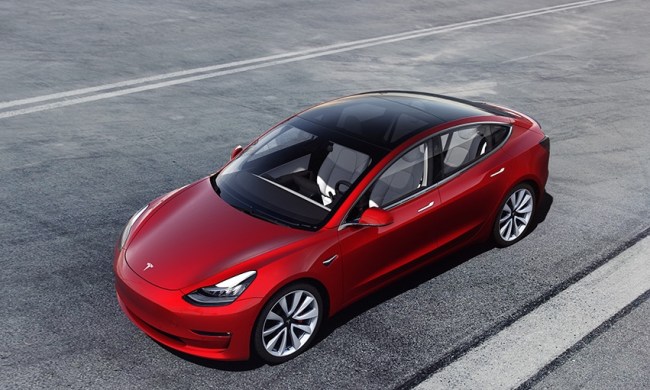Electric cars won’t only be good for the environment — they’ll be good for your power-hungry tendencies, too. As per a new report from the New York Times, companies are looking to turn away from the traditional 12-volt systems to provide the juice for these cars of the future, and looking to a 48-volt standard instead.
For the last seven decades or so, 12-volt batteries have been the standard. But now that vehicles have an increasing number of electrical components and are relying on hybrid drive systems, it would appear that carmakers are turning away from this norm.
Previously, efforts to increase the voltage in cars has generally died due to cost concerns, but as the Times notes, “recent regulatory developments and the hardware that will one day make autonomous cars feasible” have also opened the doors to more powerful batteries. Plus, they’re cheaper today than they were before, too. As Jürgen Wiesenberger, director of the hybrid electrical vehicles unit at Continental North America told the Times, “The market was not ready for [these batteries] in the past because of cost, but the 2013 fuel price spike changed that.”
Indeed, some cars already boast 48-volt systems, like the Porsche Cayenne and Bentley Bentayga SUVs. But whereas these cars are largely inaccessible to the vast majority of car buyers, there could soon be widespread adoption of a new standard.
Moving forward, it’s likely that the 48-volt system will be seen in what’s called a mild hybrid system, which is said to offer 70 percent of the benefit of a full hybrid car at 30 percent of the cost. Projections now suggest that 48-volt mild hybrids could take 14 percent of market share in terms of global new vehicle sales in 2025, and gas or diesel-only engines will only have 65 percent marketshare.
Volvo is leading the charge in much of this new phase of cars, as it will use the 48-volt standard for its mild hybrid cars. Audi, on the other hand, will be introducing the system to the 2019 A7 and A8.
So look out, world. The cars of the future may just have a new and powerful trick up their sleeves.


